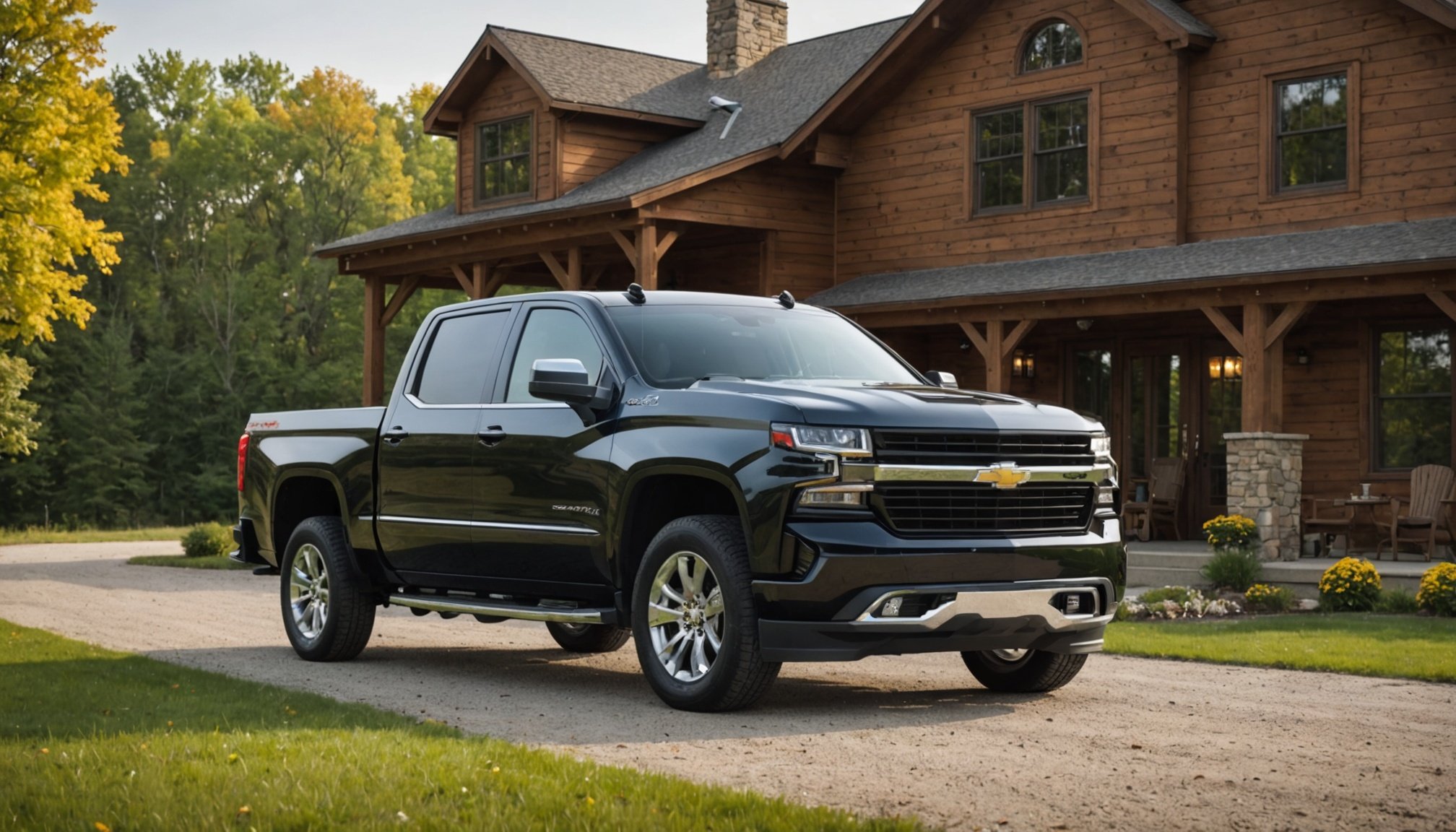Overview of Remote Start Systems
Remote start systems have emerged as a popular option for many vehicles, enhancing convenience and comfort. They allow drivers to start their vehicles’ engines from a distance, facilitating quicker cabin warming or cooling, especially during extreme weather conditions. This can not only improve comfort but also contribute to better vehicle maintenance by easing engine stress in cold conditions.
Discussing the compatibility of remote start systems with the Chevrolet Silverado is crucial. Different models of the Silverado may have varying levels of compatibility, often dependent on the model year, trim package, and any existing factory-installed technology. Ensuring that the remote start system is tailored to your specific Silverado can prevent installation issues and system malfunctions.
Also read : Unlock Peak Performance and Longevity: The Essential Engine Oil Guide for Your High-Performance Porsche 911
Choosing the right remote start system is of utmost importance. Compatibility with the vehicle, ease of installation, and reliability are key factors to consider. While aftermarket options may offer a broader range of features or lower costs, Original Equipment Manufacturer (OEM) systems might provide better integration with your Silverado’s existing electronics. Careful selection ensures that users can enjoy the full range of benefits these systems offer without compromising vehicle integrity or warranty.
Necessary Tools and Materials
Installing a remote start system for your Chevrolet Silverado requires a selection of essential tools and materials to ensure a smooth process. The selection and quality of these tools can significantly impact both the ease of installation and the reliability of the setup.
Also read : Unleash Your BMW 335i’s Power: Essential Turbocharger Maintenance Tips for Peak Performance
List of Essential Tools
- Screwdrivers: A set of screwdrivers, both Phillips and flathead, is necessary for removing interior panels and other components.
- Wire cutters and strippers: Critical for handling and preparing electrical wires properly.
- Multimeter: Important to ensure proper connection and identify if there are any electrical discrepancies.
- Drill: May be useful for routing wires through certain vehicle areas.
Additional Materials Needed
Besides tools, some additional materials play a crucial role. These include connectors and wire harnesses designed specifically for your Silverado model, ensuring a secure and stable connection. The use of the correct materials prevents electrical shorts and maintains system integrity.
Recommendations for Quality Tools and Equipment
Quality matters. Opt for reliable brands that offer durability and precision. Investing in premium tools may incur upfront costs, yet often saves time and potential issues during installation, reflecting a well-rounded approach to preparing for the installation of remote starts.
Safety Precautions
Understanding and implementing safety measures is crucial when installing a remote start system in your Chevrolet Silverado. One of the foremost steps before beginning installation is to disconnect the vehicle battery. This ensures that there is no live current that could lead to electrical shocks or damage to the vehicle’s electronics. Once the battery is disconnected, you will be in a much safer position to start the installation process.
When working with electrical systems, adherence to electrical safety guidelines is non-negotiable. Wear insulated gloves when handling electrical components and ensure your tools are properly insulated. Avoid using tools with worn-out handles or metal parts when possible, as these could inadvertently lead to short circuits.
To prevent damage to the vehicle’s electronics, handle all components with care. Avoid exerting excessive force when removing or reattaching connectors, and ensure all wires are properly insulated to prevent shorts. A key tip is to always follow the wiring diagrams provided by the remote start system’s manual, which helps in correctly routing and connecting wires. These precautions not only safeguard you and your vehicle but also ensure the longevity of the installed system.
Step-by-Step Installation Process
Installing a remote start system in your Chevrolet Silverado can greatly enhance convenience, but it requires careful execution. Follow these detailed steps to ensure a smooth installation process.
Preparing the Vehicle
Begin by clearing any personal items from your Silverado’s interior to prevent obstructions during the installation. Reading the remote start system manual prior to installation is crucial; it provides specific instructions and wiring diagrams unique to your system. Identify key installation points, such as the ignition switch and wiring harness, which are vital for a successful setup.
Wiring the Remote Start System
Connecting the remote start unit to the vehicle requires precision. Use a wire harness compatible with your Silverado model and follow the manual’s wiring instructions. Routinely check that wires are secure and insulated to avoid electrical issues. If you encounter wiring problems, re-evaluate connections for loose or improperly installed wires.
Programming the System
Once wired, program the remote start system to communicate with your existing key fob. Follow the system manual’s programming steps meticulously. Test the installation by attempting to start the vehicle remotely. If initial attempts fail, revisit the programming instructions and ensure all steps were correctly followed. Adjust as needed for a seamless experience.
Compatible Remote Start Systems
Choosing the right compatible systems for your Chevrolet Silverado ensures a seamless experience. Before selecting a remote start, consider compatibility factors like the Silverado’s model year, trim level, and existing electronics. A model that has more factory-installed technology might require a more sophisticated remote start system to ensure flawless integration.
Popular remote start systems for the Silverado often align with manufacturer specifications. This alignment helps to avoid potential interference with the vehicle’s current systems. Some systems offer telematics integration, enabling smartphone-controlled starting and monitoring.
Consider the distinction between OEM and aftermarket remote start systems. OEM options are tuned to work with your specific Silverado model, offering reliable integration and often maintaining warranty protection. In contrast, aftermarket systems may offer features beyond OEM capabilities, like extended range or additional security measures. However, be mindful of possible compatibility issues or warranty implications with aftermarket products.
Availability of these options largely depends on the model of the Silverado you own. By focusing on both the features and how a system fits with your vehicle, you ensure the highest performance and compatibility, preserving long-term vehicle integrity.
Common Questions and Concerns
When contemplating a remote start system for your Chevrolet Silverado, various questions are likely to arise. One common question involves the impact of remote start installation on fuel consumption. In general, using a remote start system for brief warming or cooling periods does not significantly affect fuel economy. It allows you to prepare the cabin climate efficiently without extensive engine idling.
Another frequent concern regards system malfunctions. It’s crucial to ensure compatibility between the remote start system and your Silverado model to prevent functionality issues. Following the installation manual meticulously can also reduce malfunctions by ensuring proper wiring and connections. Conflicts often arise from incorrect installations, such as improper wire connections, which can be avoided by adhering to professional guidelines.
Queries about the security implications of remote start systems are also common. Modern remote start systems incorporate security measures that enhance vehicle safety, often more sophisticated than traditional key fobs. Always choose systems offering encrypted communication to mitigate theft risks.
For troubleshooting, consulting the manufacturer’s resources can be invaluable, offering tailored advice and detailed guides to resolving specific issues. If questions persist, involving an experienced technician may prove beneficial for ensuring full compatibility and functionality.
Warranty Implications
When installing a remote start system in your Chevrolet Silverado, understanding the warranty implications is essential. While these systems offer significant convenience, they can impact your vehicle’s warranty if not handled correctly.
Understanding Warranty and Modifications
OEM (Original Equipment Manufacturer) systems are generally preferred for maintaining warranty coverage. These systems are designed to integrate seamlessly with your vehicle’s existing electronics, reducing the likelihood of voiding the warranty. Conversely, aftermarket systems, though rich in features, may bring unforeseen complications, such as incompatibilities that could affect the vehicle’s performance, leading to potential warranty disputes.
Tips for Maintaining Warranty Coverage
To safeguard your warranty, adhere to manufacturer policies regarding modifications. These policies usually necessitate that installations are conducted by certified professionals. Before installation, consult your warranty’s terms to understand what specific conditions could cause its nullification.
Protecting Vehicle Protection
Keep thorough documentation of all installations and modifications. This includes receipts, installation guides, and any communication with the manufacturer. These records can be invaluable if you need to demonstrate that your installation did not compromise your vehicle’s integrity. Engaging certified technicians for installations ensures adherence to best practices, preserving both warranty and vehicle performance.

